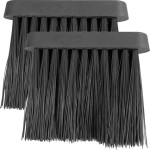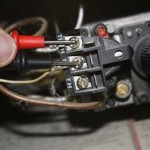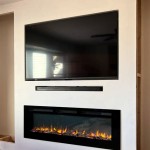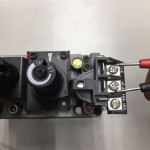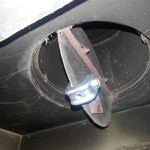Are Fireplace Heaters Energy Efficient? A Comprehensive Analysis
The appeal of a fireplace heater, with its flickering flames and comforting warmth, is undeniable. However, in an era increasingly focused on energy conservation and minimizing environmental impact, the question of whether fireplace heaters are truly energy efficient is a crucial one. This article provides a detailed examination of the energy efficiency of fireplace heaters, exploring various types, factors influencing their performance, and comparing them to alternative heating solutions.
The term "fireplace heater" encompasses a range of heating appliances, each with distinct characteristics affecting its energy efficiency. Traditional wood-burning fireplaces, gas fireplaces (both vented and ventless), and electric fireplace heaters fall under this broad category. Understanding the operational principles and design features of each type is essential for accurately assessing their energy performance.
Energy efficiency, in this context, refers to the proportion of energy consumed by the appliance that is effectively converted into usable heat within the designated space. A highly efficient heater will minimize wasted energy, reducing both energy consumption and associated costs. Evaluating the energy efficiency of fireplace heaters requires considering various factors, including fuel type, venting systems, insulation, and the overall design of the appliance.
Types of Fireplace Heaters and Their Energy Efficiency
The energy efficiency of a fireplace heater is largely determined by its fuel source and design. Each type presents unique challenges and advantages in terms of energy conservation.
Traditional Wood-Burning Fireplaces: These are often the least energy-efficient option. A significant portion of the heat generated escapes through the chimney, sometimes as much as 90%. This is due to the large volume of air required for combustion, which is then expelled along with the smoke. Furthermore, traditional fireplaces can create drafts, drawing heated air out of other rooms in the house and requiring the central heating system to work harder.
The efficiency of a wood-burning fireplace can be improved by installing features such as a damper to seal the chimney when not in use, glass doors to reduce air leakage, and a heat-circulating fireplace insert. These inserts contain a firebox surrounded by a metal shell, which is heated by the fire. A fan then circulates the heated air back into the room, improving the overall heat output and reducing losses up the chimney.
Gas Fireplaces (Vented): Vented gas fireplaces offer improved energy efficiency compared to traditional wood-burning fireplaces. These units burn natural gas or propane and vent exhaust gases through a chimney or vent pipe. While they still lose some heat through the venting system, the design is typically more efficient than an open fireplace. They often feature sealed combustion chambers, which draw combustion air from outside the house, preventing the depletion of warm indoor air.
The efficiency ratings of vented gas fireplaces vary depending on the model. Some models boast high efficiency ratings, often exceeding 70%, indicating that a significant portion of the fuel's energy is converted into usable heat. However, even with improved efficiency, vented gas fireplaces still require a dedicated venting system, which can add to the installation cost.
Gas Fireplaces (Ventless): Ventless gas fireplaces are designed to operate without a chimney or vent pipe. They burn gas more completely, producing fewer emissions and releasing the heat directly into the room. This eliminates the heat loss associated with venting, resulting in significantly higher energy efficiency. Ventless gas fireplaces can achieve efficiency ratings of 99% or higher.
However, ventless gas fireplaces are not without concerns. Because they release combustion byproducts directly into the living space, proper ventilation is crucial to prevent the buildup of carbon monoxide and other harmful gases. Many jurisdictions have restrictions or outright bans on ventless gas fireplaces due to these safety concerns. Regular maintenance and the installation of carbon monoxide detectors are essential when using ventless gas fireplaces.
Electric Fireplace Heaters: Electric fireplace heaters utilize electricity to generate heat. They are typically 100% energy efficient at the point of use, meaning that all the electricity consumed is converted into heat. However, it's important to consider the overall energy generation process when evaluating the environmental impact. Electricity generation often involves burning fossil fuels, which can result in emissions. Furthermore, the cost of electricity can be higher than that of natural gas or propane, making electric fireplace heaters potentially more expensive to operate.
Electric fireplace heaters come in various styles, including freestanding units, wall-mounted models, and fireplace inserts. They offer convenience and ease of installation, as they do not require venting or fuel lines. Many models also feature adjustable heat settings and realistic flame effects, providing both warmth and ambiance.
Factors Influencing Fireplace Heater Energy Efficiency
Beyond the type of fireplace heater, several factors can significantly impact its energy efficiency. These factors include insulation, venting systems, proper installation, and user habits.
Insulation: Adequate insulation around the fireplace and chimney can prevent heat loss to the surrounding structure. Insulating the walls and ceiling around the fireplace can help retain heat within the living space, reducing the need for supplemental heating. Proper insulation also minimizes drafts and prevents cold air from entering the house.
Venting Systems: The design and condition of the venting system can affect the energy efficiency of vented fireplaces. A poorly maintained or improperly sized chimney can restrict airflow, leading to incomplete combustion and increased heat loss. Regular chimney inspections and cleaning are essential for ensuring optimal performance and preventing safety hazards.
Proper Installation: Correct installation is crucial for ensuring the safe and efficient operation of any fireplace heater. Improperly installed units can leak combustion gases, pose fire hazards, and reduce energy efficiency. It is essential to follow the manufacturer's instructions and consult with a qualified professional during installation.
User Habits: How the fireplace heater is used can also impact its energy efficiency. Burning too much wood in a wood-burning fireplace can lead to incomplete combustion and increased emissions. Setting the thermostat too high on a gas or electric fireplace can result in excessive energy consumption. Using the fireplace as a primary heating source in a large, uninsulated room can also be inefficient.
Comparing Fireplace Heaters to Alternative Heating Solutions
To fully assess the energy efficiency of fireplace heaters, it is helpful to compare them to alternative heating solutions, such as central heating systems, space heaters, and heat pumps.
Central Heating Systems: Central heating systems, such as furnaces and boilers, are typically more energy efficient than traditional wood-burning fireplaces. They are designed to distribute heat evenly throughout the house, providing consistent and comfortable temperatures. However, central heating systems can be less efficient than some gas fireplace inserts or electric fireplace heaters when heating a single room or zone.
Space Heaters: Space heaters, including electric resistance heaters and portable gas heaters, can be effective for heating small areas. Electric resistance heaters are 100% efficient at the point of use, but they can be expensive to operate due to the high cost of electricity. Portable gas heaters offer the advantage of being able to operate without electricity, but they require proper ventilation and safety precautions.
Heat Pumps: Heat pumps are highly efficient heating and cooling systems that transfer heat from one location to another. They can extract heat from the outside air, even in cold temperatures, and transfer it indoors. Heat pumps are typically more energy efficient than electric resistance heaters and can provide both heating and cooling.
When comparing different heating solutions, it is important to consider the specific needs of the space, the climate, and the cost of fuel or electricity. Fireplace heaters can be a viable option for supplemental heating or for creating a cozy ambiance, but they may not be the most energy-efficient choice for primary heating.
In summary, the energy efficiency of fireplace heaters varies significantly depending on the type of appliance, its design features, and how it is used. Traditional wood-burning fireplaces are generally the least efficient, while ventless gas fireplaces and electric fireplace heaters can achieve higher efficiency ratings. However, safety concerns and the cost of fuel or electricity should also be considered when selecting a fireplace heater. Proper installation, maintenance, and user habits are essential for maximizing energy efficiency and minimizing environmental impact.

Are Electric Fireplaces Energy Efficient Direct Learning Center

Are Electric Fireplaces Energy Efficient We Love Fire

Are Electric Fireplaces Energy Efficient Direct Learning Center

Electric Fireplace Energy Efficiency Results Most Efficient Wattage Btu For 117 Models

Are Electric Fireplaces Energy Efficient We Love Fire

Mythbusters Electric Fires Dimplex

Electric Fireplace Heater Are They Effective Types And Specs
The 6 Best Electric Fireplace Heaters Of 2024

How Energy Efficient Is An Electric Fireplace

Increasing Efficiency Of Your Wood Heater Lopi Fireplaces
Related Posts

